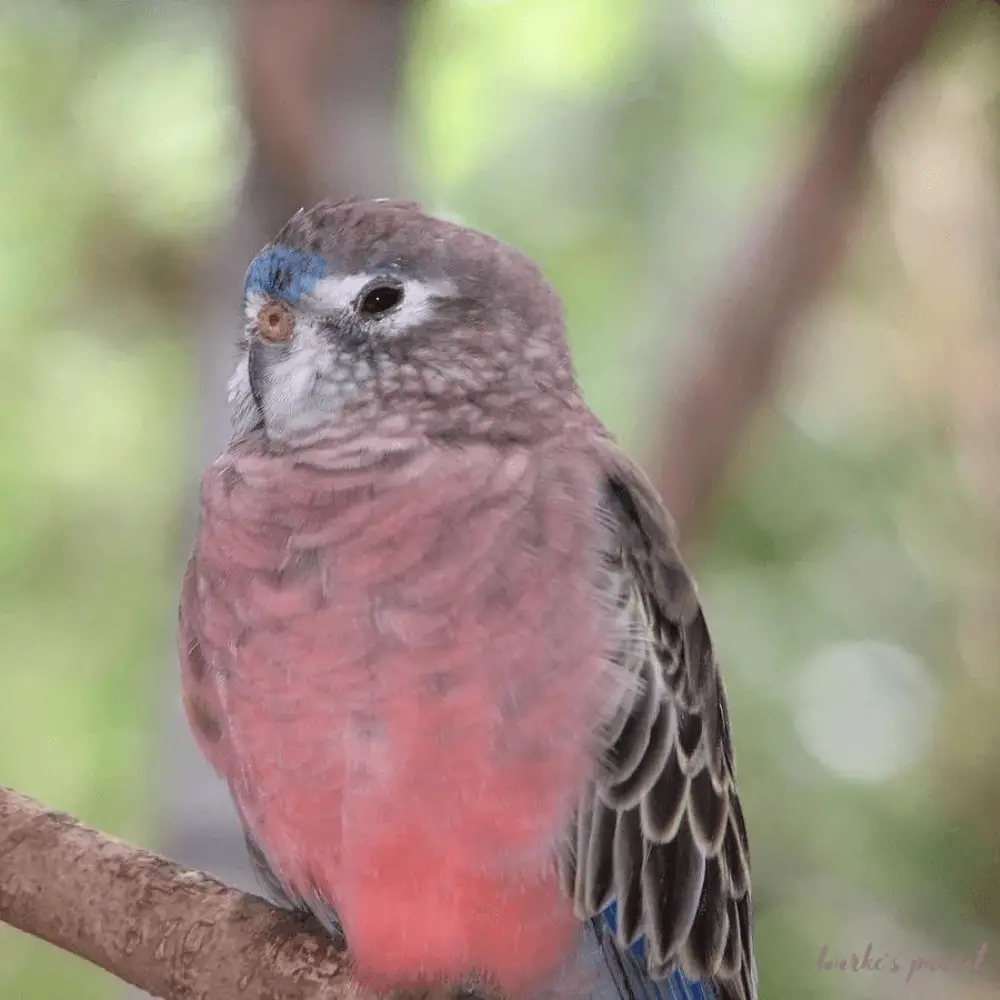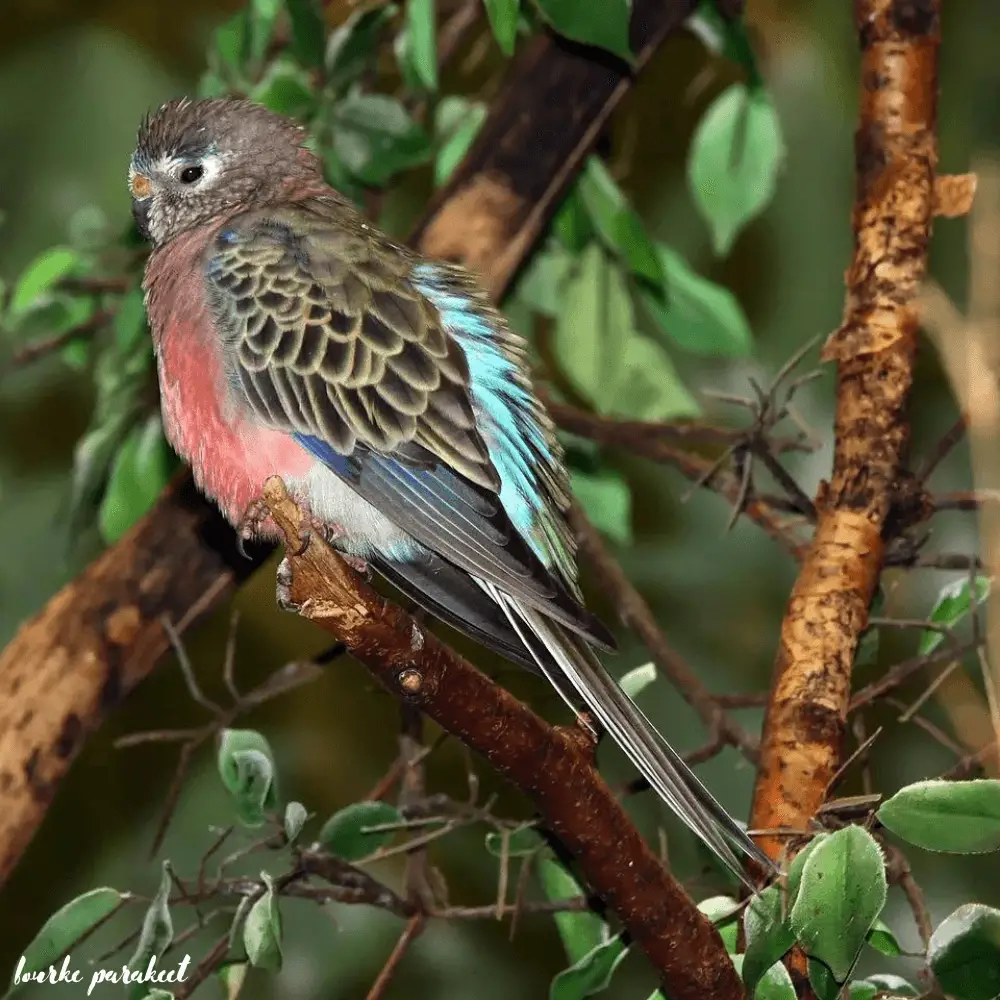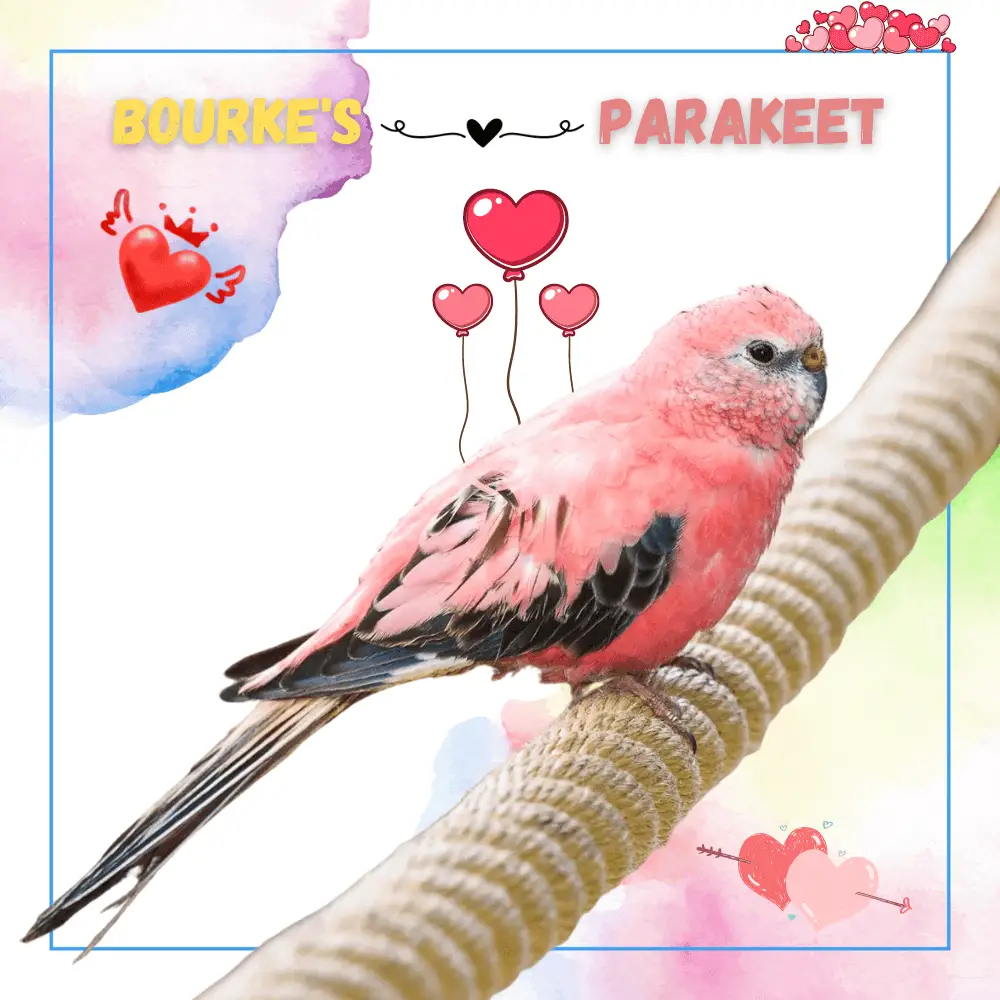The Bourke’s parakeet has a certain success with individuals, all over the world! It must be said that it is quite charming with its soft and pastel colors. Would you like to know more before making the decision to adopt a parakeet? Find out everything there is to know about the Bourke’s parakeet.
The Bourke’s parakeet belongs to the order Psittaciformes (which includes the species of parrots, parakeets, cockatoos, lories, and conures…). She is originally from Australia. Moreover, its name comes from an Australian city, Bourke. It could be the place where we saw him for the first time. The name of this locality itself comes from the name of the governor of the state (New South Wales) at the time of its foundation, Richard Bourke.
In the wild, it likes to live in wooded areas (eucalyptus forests) but also in more arid areas.
Bourke parakeet lifespan
The life expectancy of a Bourke’s parakeet is between 9 and 13 years. Some can live up to 20 years. Thus, you are committing yourself for the long term by adopting this parakeet, to which you will quickly become attached.
She is rather robust in health and fits well into family life. It is not at all restrictive with regard to its maintenance. In addition, she is playful and also has an affectionate and calm character, she loves company.
Bourke parakeet personality

Among the many existing species of parakeets, it is one of the smallest. Indeed, its size is between 16 and 23 centimeters, and its weight is between 45 and 50 grams. Its plumage is characterized by pastel but varied colors, which gives it a very attractive appearance.
Its belly is pink in color : it ranges from pink-brown on the chest to brighter pink on the abdomen.
Several other colors are found on its wings, with shapes of semicircles: brown-black, blue, and yellow. For example, there are brown or blue parts, circled in yellow on the edges. The blue is also located on the underside of the wings.
Its back takes up these various mixed colors. On the tail, a beautiful turquoise blue predominates.
The top of the cheeks is brown, flecked with pink. At the level of the shoulders, we observe a gray-brown color with lighter borders. We can notice a little white around the eyes (which are black) and on the forehead. The beak is also black, the legs are dark (brown-gray).
These are the original colors of the Bourke’s Parakeet. But many color mutations have appeared in the farmed bird.
For example, the pink mutation will give a parakeet that is mostly pink, not just on the belly but also on the head and back. This pink variety has clear legs as well as a beak (grey-yellow). Other mutations exist but are less widespread: bronze fallow, lutino, edge, and opaline.
Behavior of parakeets

This parakeet has a calm and discreet nature. This is why it is well suited to living in an apartment ! Indeed, your neighbors or those around you will not be bothered by her cries… She just emits a few small chirps that are pleasant to hear. These give the impression that she is in a happy mood.
If she wants to signal a danger, she can let out a more strident cry.
Naturally, if you prefer talkative birds, go for another species of parakeet or a talking parrot.
Tamed, she can show a lot of affection.
As with other pet parrots, you will need to be patient in taming it and take the time it takes for it to get used to you.
But once that’s done, this bird will be a perfect little feathered companion ! You can then interact and play with it easily.
If you want to know more, check out our article on EAM parakeets.
On the other hand, in nature, the parakeet has gregarious behavior. It lives in a community, the groups being able to reach a few hundred individuals. It can also live in couples. The tamed parrot will retain this instinct. This is why we recommend adopting two or more!
If you’ve never had a hook-billed pet bird before, you can get started with the Bourke’s parakeet without a problem. Within a day, its most “active” periods correspond to sunrise and sunset. Try to have one to two hours of activity a day with her!
Bourke parakeet cage
Bourke’s parakeets like to fly. This is why it is better to get them an aviary rather than a cage. If you opt for a cage, make sure that its dimensions are sufficient for your birds to move around without discomfort. You will find suitable aviaries and large cages in our stores.
In addition, the cage must contain all the necessary elements and useful accessories for the life of your little feathered companions. This includes perches, swings, tubs, and eating utensils. The Bourke’s parakeet appreciates the baths! You will make sure to change the water every day. In addition, it is possible to spray a little water on the little bird, it will then take care of grooming itself.
The little parakeet loves to play and will be delighted to find a few toys in his cage to keep him busy! This could be a ladder, climbing rope, or other hanging toy.
Bourke parakeet food
You will provide him with a balanced and adapted diet. It is made up of a mixture of parakeet seeds which will provide it with all the necessary nutrients (vitamins, minerals, fatty acids, etc.).
In addition, you will give him fresh food made up of fruits and vegetables (broccoli, carrot, apple, banana, etc.). In addition, a mineral block and a cuttlebone will provide trace elements and calcium. And your parakeet will really appreciate a bunch of millet as a treat!

